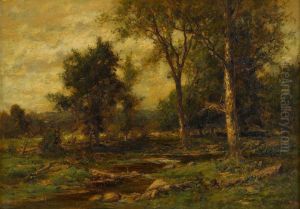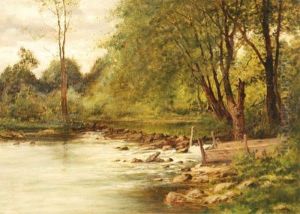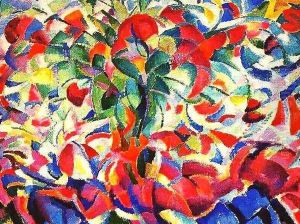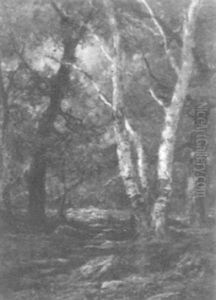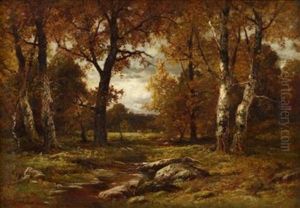Charles Linford Paintings
Charles Linford was an American painter born in 1846 in Pittsburgh, Pennsylvania. He is known for his landscape paintings, which often depicted the serene and pastoral settings of the American and European countryside. His work is characterized by a delicate handling of light and color, capturing the changing moods of nature with a subtle and refined touch.
Linford's early life was marked by a strong inclination towards the arts, and he pursued his artistic education with fervor. He studied at the Pennsylvania Academy of the Fine Arts, where he was influenced by the works of the Hudson River School and the Barbizon School, both of which played a significant role in shaping his style and approach to landscape painting.
Throughout his career, Linford traveled extensively in Europe, drawing inspiration from the landscapes he encountered. These travels not only enriched his palette but also allowed him to explore different techniques and perspectives, which he later incorporated into his paintings. Despite the influence of European landscapes and styles, Linford's work remained distinctly American in its essence, capturing the unique light and atmosphere of the American landscape.
Linford's paintings were well received during his lifetime, and he was a member of several prestigious art institutions, including the National Academy of Design. His works were exhibited in major cities across the United States, earning him a respectable position among his contemporaries in the American art scene.
Sadly, Charles Linford's life was cut short when he died in 1897 at the age of 51. Despite his relatively brief career, Linford left behind a significant body of work that continues to be appreciated for its beauty and tranquility. Today, his paintings can be found in numerous public and private collections, serving as a testament to his talent and his contribution to the American landscape painting tradition.



